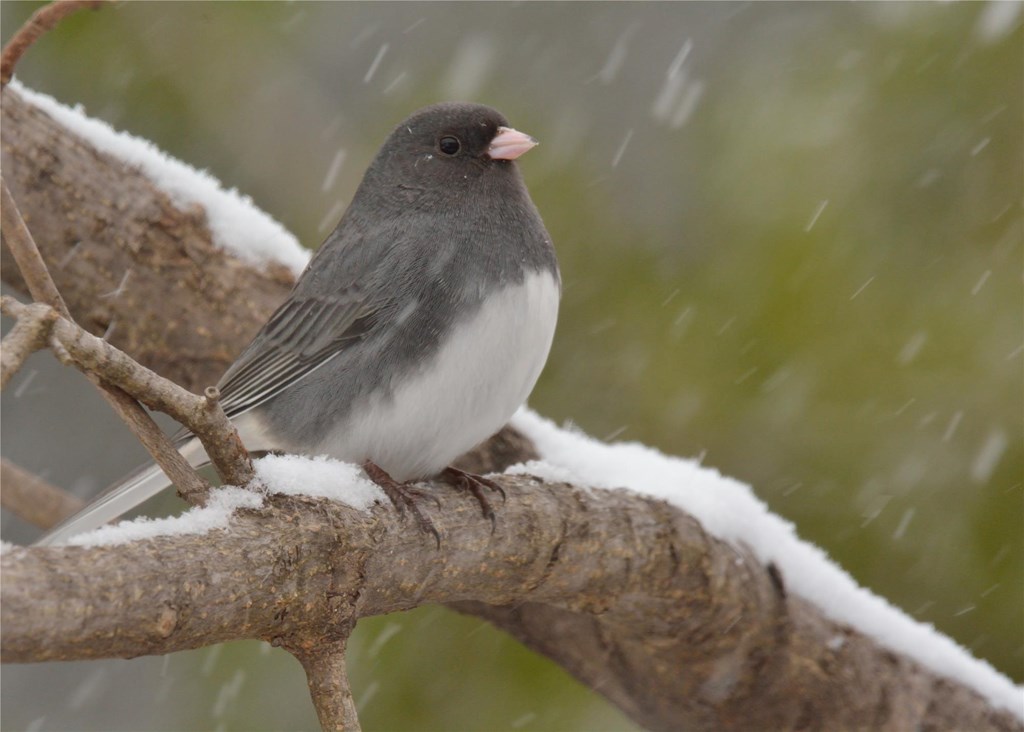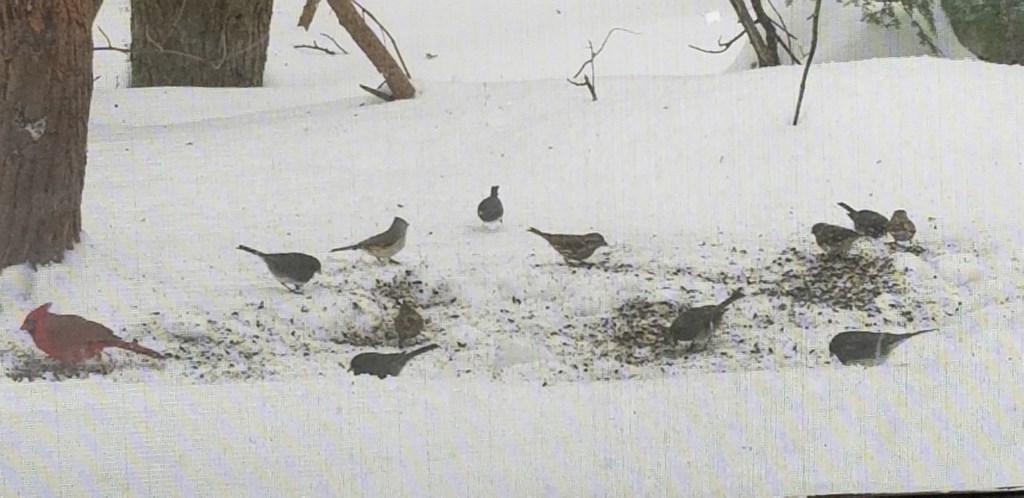Window into the Winter Woods
Posted on March 11, 2021 in Science

by Bracken Brown, Biologist-Naturalist
Hawk Mountain is best known for its migration counts where hawk watching enthusiasts track passing migrants through their binoculars. But between migration counts Hawk Mountain staff and volunteers can be found surveying what bird species are utilizing the Sanctuary’s woodlands. During the winter months as summer songsters fall silent and wintering areas are established how do we determine concentration of wintering individuals on the Sanctuary? Birds are resource driven so where they settle for the winter has to be able to support them with enough food and cover to survive. How the birds interact with the environment can be used to monitor changes over time and can tell a lot about the ecosystem.
Hawk Mountain undertakes two types of surveys aimed at providing data on what species are using our winter woods. Hawk Mountain bird feeders are registered as part of the Project Feederwatch network. This is a multinational effort led by the Cornell Lab of Ornithology and Birds Canada with an aim to collect winter dispersal of bird species. Twice a week on consecutive days from November to April volunteers’ man the feeder windows recording how many individuals of each species visit. This provides arrival and departure times for seasonal visitors and an idea of how many individuals are in the immediate vicinity. An individual feeder data provides a small glimpse of bird dispersal in the immediate area, but the power of the project comes when the data from thousands of other sites from across the region. As this project enters over 30 years of consistent winter counts it is possible to track shifts in species winter concentrations and dispersal. This can be explored at the explore data option on the Project Feederwatch website.
After an exciting winter finch irruption witnessed during the fall count brought an increase in the number of purple finches visiting the Hawk Mountain feeders joining our more typical feeder birds the chickadees, tufted titmice, American goldfinch, and mourning dove. Early in our count season small groups of pine siskin were using the feeders but as winter progressed, they have moved elsewhere and while the snow cover kept the dark-eyed junco close we expect to soon see our winter favorites begin to leave as spring approaches.

Our other survey aims at assessing how birds are using our ever-changing forest landscape. To accomplish this survey grids have been marked out, one on the crest of the ridge and one on the lower slopes of the sanctuary property. These static locations are visited between January and February and as the surveyor moves along the grid species, location, and behavior are noted. Winter surveys have been conducted since 1983 and show changes in forest species over time. Winter surveys in the woods are quiet compared to the cacophony of advertising males marking their territories spread across the grids. Crunching through frosty leaves or snow surveyor need to keep their ears open for subtle cues of wintering birds, whether it is the tentative tapping of a feeding downy or hairy woodpecker or the high-pitched wavering calls of a brown creeper skulking up a trunk. If lucky during the survey a feeding flock will move through the grid advertising their presence with contact calls. The woods burst with life as chickadee, tufted titmice, brown creeper and white-breasted nuthatch move by exploring for food. Getting an accurate count of each species present provides an excellent challenge as cryptic colors merge individuals with their environment before moving off into the trees. Repeating these surveys highlight the dispersed of birds as they eke out a living in the woods. This can mean a surveyor could potentially have an excellent sunrise survey devoid of birds. But over time this dispersal data infers health of the woods and what species they support. Highlights from this season so far were common redpoll using the river of rocks plot for over a week and a northern saw-whet owl that announced its presence as a survey was being conducted.
Both these survey techniques aim to catalog what species are able to make a living on the Sanctuary, which can be used to answer larger research questions. So, as we march towards another spring migration season remember that a bird, whether it is out the window or beyond, is telling a story of survival dependent on its surroundings. By keeping and sharing records you can become a part of the network assessing winter distributions.